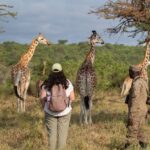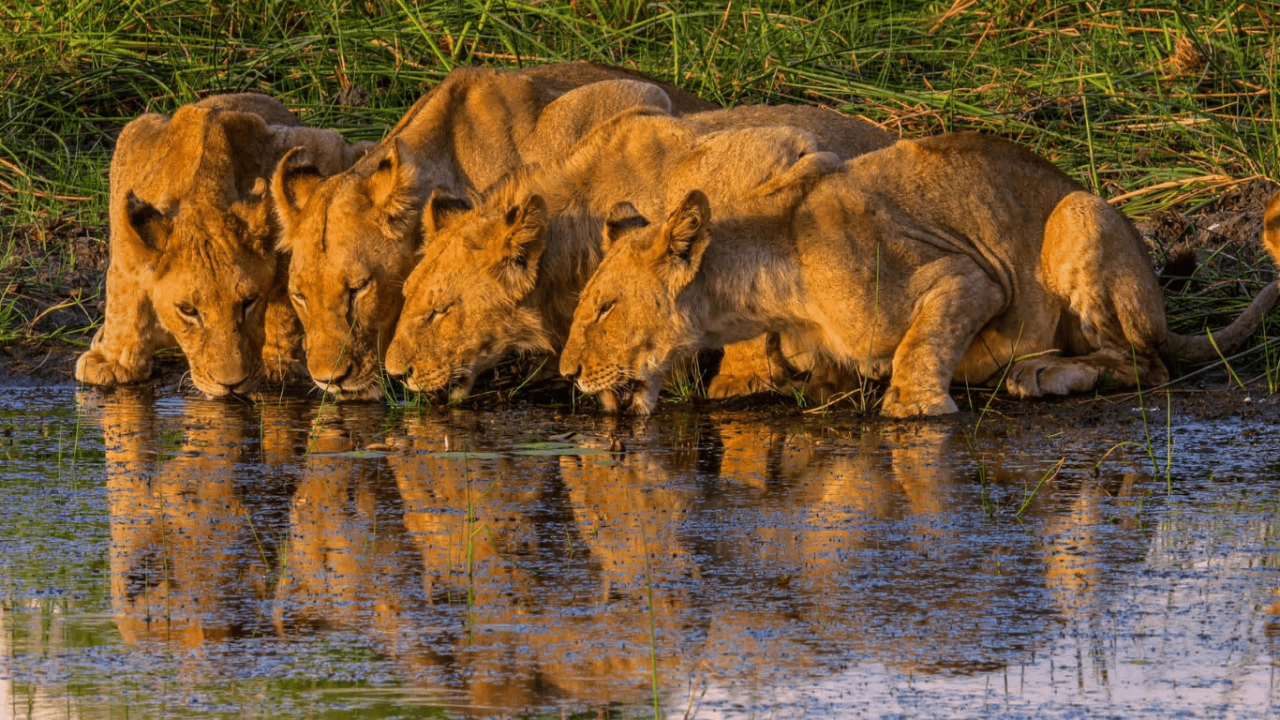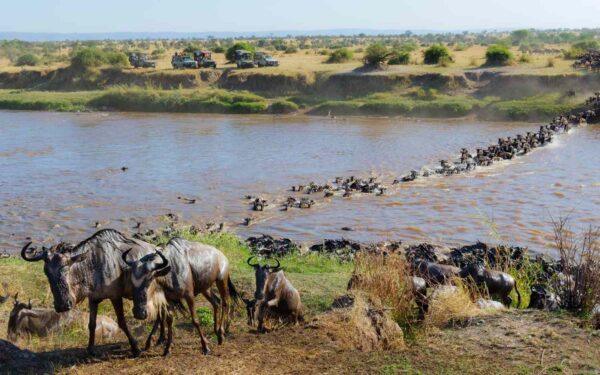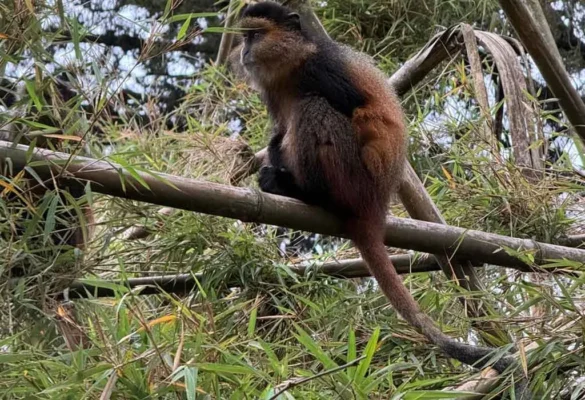Where Can I Buy a Chimpanzee Tracking Permit?
November 14, 2025
Are Armed Rangers Available During Walking Safaris in Uganda?
November 17, 2025What Wildlife Can I See on a Walking Safari in Uganda?
What wildlife can I see on a walking safari in Uganda? This is one of the most asked questions by travelers planning their African adventure. Unlike traditional game drives, walking safaris in Uganda provide an up-close and personal encounter with nature. They strip away the barriers between visitors and the wild, allowing travelers to immerse themselves in the raw beauty of Uganda’s savannahs, forests, and wetlands. Guided by experienced rangers, a walking safari is not just about spotting wildlife but also about understanding ecosystems, bird species, medicinal plants, and animal tracking skills that make the wilderness come alive.
Why Choose a Walking Safari in Uganda?
Uganda is globally known for its Uganda Gorilla Safaris, but beyond gorilla trekking, the country offers extraordinary walking safari experiences in places like Lake Mburo National Park, Murchison Falls, and Kidepo Valley. Travelers often ask, Can walking safaris be combined with Uganda Gorilla Trekking Safaris? The answer is yes. Many itineraries by Renai Safaris combine gorilla trekking in Bwindi Impenetrable Forest with guided walking safaris in savannah parks, creating the perfect balance between primate encounters and plains wildlife. This makes Uganda not only a destination for gorillas but also for those who seek intimate wildlife and cultural experiences.
Walking Safaris in Uganda – A Deeper Connection to Nature
So, what wildlife can I see on a walking safari in Uganda? Unlike in a safari vehicle, walking safaris make you part of the environment. Every sound, footprint, or rustle in the bushes tells a story. In Lake Mburo National Park, for example, travelers often encounter zebras grazing peacefully, giraffes towering above the acacia trees, and impalas sprinting gracefully across the savannah. The absence of lions in this park makes it one of the safest places for guided walking safaris, yet it still teems with exciting wildlife.
Travelers frequently wonder, Are Uganda Wildlife Safaris on foot as rewarding as game drives? The answer is yes, though in a different way. Game drives are excellent for covering long distances quickly and spotting big game, but walking safaris immerse you in the finer details—animal tracks, dung, insects, and bird calls that vehicles often overlook. On foot, you see the wilderness from the perspective of the animals themselves, making the experience far richer.
With Uganda Best Safaris, you can even combine walking safaris with activities such as Uganda Birding Safaris, where bird lovers get the chance to spot species like the shoebill stork, African finfoot, and various sunbirds at close range. Such multi-layered experiences highlight why Uganda is one of Africa’s most versatile safari destinations.
Wildlife Encounters on Uganda Walking Safaris
When travelers ask, what wildlife can I see on a walking safari in Uganda?, the answer depends on the specific park. In Lake Mburo National Park, expect herds of zebras, buffaloes, topis, giraffes, and hippos along the lake shores. In Murchison Falls National Park, walking safaris in selected areas bring you close to elephants, Uganda kobs, hartebeests, and warthogs. Meanwhile, Kidepo Valley National Park, known for its untouched wilderness, offers the possibility of spotting ostriches, cheetahs, and large herds of buffalo on foot.
Visitors often wonder, Are predators part of walking safari encounters in Uganda Wildlife Safaris? While most walking safaris avoid lion territories for safety reasons, rangers sometimes lead walks in areas where predators roam, offering thrilling but controlled experiences. Every walk is guided by armed park rangers who ensure safety while also educating guests about animal behavior and ecosystems.
Walking safaris also highlight the smaller species that are often overlooked. Termite mounds, dung beetles, butterflies, and medicinal plants become part of the story, making each walk an educational journey. This is why many travelers include walking safaris as part of their Uganda Cultural Safaris, where local guides explain how traditional communities use certain plants for food and medicine, enriching the safari experience.
Combining Walking Safaris with Uganda Gorilla Trekking Safaris
A common question is, Can walking safaris be combined with Uganda Gorilla Safaris? The answer is a resounding yes. Many itineraries crafted by Renai Safaris blend primate trekking with walking safaris to offer travelers the best of both worlds. Imagine starting your journey with Uganda Gorilla Trekking Safaris in Bwindi Impenetrable Forest, where you spend an hour with a gorilla family, and then traveling to Lake Mburo for a guided walking safari among zebras and giraffes.
This combination makes Uganda unique because few destinations allow travelers to track endangered primates in dense rainforests and then walk alongside plains game in open savannahs within the same trip. For those seeking an even richer experience, Uganda Chimpanzee Safaris in Kibale Forest can also be paired with walking safaris, creating a diverse itinerary that blends primates, savannah wildlife, and birds.
Such multi-experience itineraries are what make Uganda Best Safaris appealing for global travelers. They ensure your time in Uganda is maximized, diverse, and unforgettable, establishing the country as a premier safari destination in East Africa.
Birdlife on Walking Safaris – Uganda Birding Safaris
Another aspect travelers often ask about is, Can Uganda Birding Safaris be enjoyed during walking safaris? Yes, absolutely. In fact, walking safaris are among the best ways to enjoy birdlife in Uganda. The country is home to over 1,000 bird species, and walking trails provide unmatched opportunities to spot them at close range.
In Lake Mburo, for example, walking safaris allow you to observe the African wattled lapwing, Ross’s turaco, and the elusive African finfoot along water bodies. In Murchison Falls, you may spot shoebills in wetlands, while Nyungwe Forest and Kibale host a wealth of forest species. Combining walking safaris with Uganda Birding Safaris provides a holistic experience that balances wildlife and avian diversity.
Birding also pairs naturally with Uganda Cultural Safaris since many local communities use birds in storytelling, songs, and traditional beliefs. This cultural dimension adds meaning to the sightings, showing how wildlife and culture intertwine in Uganda.
Cultural Dimensions of Walking Safaris in Uganda
What wildlife can I see on a walking safari in Uganda? goes beyond animals—it also includes the cultural landscape. Walking safaris often pass through communities where travelers can meet local people, learn about their daily lives, and even participate in cultural experiences. For instance, in areas around Lake Mburo, travelers can interact with cattle-keeping communities, learning about the Ankole long-horned cattle and their cultural significance.
Travelers frequently ask, Are Uganda Cultural Safaris included in walking safari itineraries? With Renai Safaris, the answer is yes. Cultural experiences are woven seamlessly into wildlife walks. You might visit a local homestead, taste traditional foods, or watch cultural dances that reflect the heritage of Uganda’s diverse tribes.
When combined with Uganda Gorilla Safaris or Uganda Chimpanzee Safaris, cultural encounters provide travelers with a complete picture of Uganda—not just its wildlife but also its people. These cultural insights enrich long itineraries and make the country stand out as a safari destination that blends ecology and humanity.
The Educational Value of Walking Safaris
Travelers often ask, Are walking safaris in Uganda only about wildlife sightings? The answer is no. Walking safaris are deeply educational. Guided by expert rangers, you learn how to identify animal tracks, understand predator-prey dynamics, and recognize medicinal plants. You gain insight into ecosystems in a way that game drives cannot match.
This educational component is why walking safaris are often included in Uganda Best Safaris designed for families, students, and researchers. They allow visitors to see the interconnectedness of wildlife, vegetation, and human communities. The slower pace of walking also encourages mindfulness, letting travelers connect with nature on a deeper level.
When combined with Uganda Gorilla Trekking Safaris, the educational value multiplies. You not only witness gorilla behaviors but also gain insight into the broader conservation challenges facing Uganda’s national parks. Such understanding builds appreciation for the need to conserve both primates and savannah wildlife, aligning perfectly with Uganda’s conservation goals.
Conclusion: Why Choose Walking Safaris in Uganda?
So, what wildlife can I see on a walking safari in Uganda? The answer includes zebras, giraffes, buffalo, antelopes, elephants, birds, and even cultural landscapes that enrich your journey. With Renai Safaris, walking safaris are not just about spotting animals—they are about connecting deeply with Uganda’s wilderness, people, and culture.
By combining walking safaris with Uganda Gorilla Safaris, Uganda Chimpanzee Safaris, Uganda Birding Safaris, and Uganda Cultural Safaris, travelers enjoy a multifaceted adventure that is both thrilling and meaningful. Uganda’s uniqueness lies in this diversity—the ability to blend primate trekking in dense forests with walking among plains game, creating truly Uganda Best Safaris.
For travelers seeking authenticity, adventure, and conservation-focused experiences, walking safaris in Uganda are the perfect choice. They offer not just sights but stories, not just encounters but connections. With the expertise and trustworthiness of Renai Safaris, your walking safari in Uganda will be an unforgettable journey into the heart of Africa.




